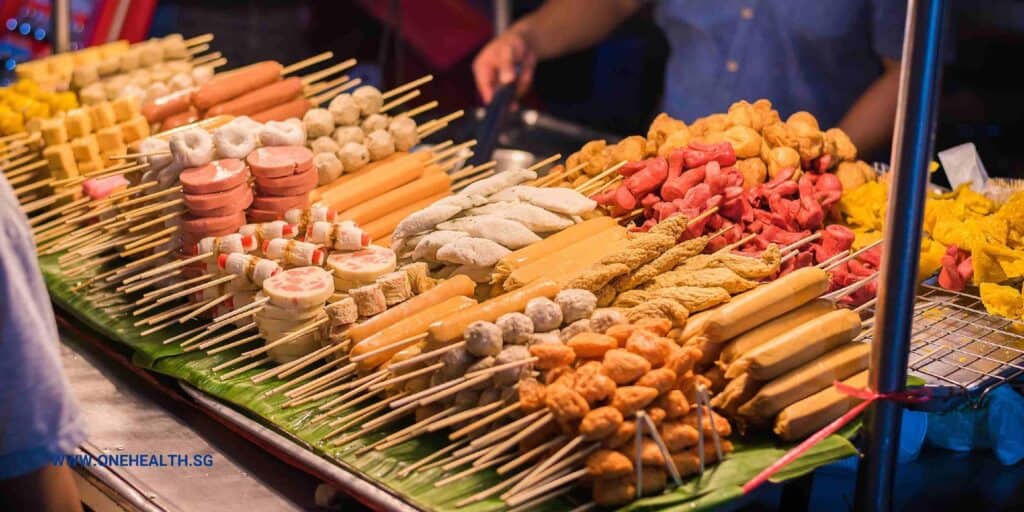Food is an inseparable part of cultural identity, and in Asia, it serves as a conduit for preserving centuries-old culinary traditions and strengthening cultural bonds. Across the diverse landscapes of Asia, each country boasts a rich tapestry of flavors, cooking techniques, and food rituals that reflect the region’s history, geography, and social fabric. This article delves into the significance of food in shaping cultural identity in Asia, exploring how culinary heritage is preserved and celebrated through the centuries.
A Melting Pot of Flavors: The Diversity of Asian Cuisines
Asia is a vast and culturally diverse continent, and its cuisines are a reflection of the region’s complex history and amalgamation of cultures. From the fiery spices of Indian curries to the delicate artistry of Japanese sushi and the aromatic blends of Thai curries, each Asian cuisine tells a unique story of its people and their connection to the land.
Regional variations in ingredients, cooking techniques, and flavors contribute to the vast array of Asian cuisines, making it a melting pot of culinary traditions. Food not only nourishes the body but also serves as a powerful expression of cultural pride and unity across Asia.
Food Rituals: The Thread of Tradition
In Asia, food rituals are an integral part of cultural identity, handed down through generations as a way to preserve customs and forge community bonds. Festivals and celebrations often revolve around food, where traditional dishes are prepared and shared among family and friends.
For example, the Lunar New Year, celebrated across several Asian countries, is marked by elaborate feasts with symbolic dishes that represent prosperity, luck, and longevity. The preparation and sharing of these special meals reinforce family ties and cultural values, nurturing a sense of belonging and shared heritage.
The Role of Street Food: A Taste of Everyday Life

Street food is a ubiquitous element of Asian culinary identity, offering a glimpse into the daily lives and tastes of locals. The bustling streets of cities like Bangkok, Mumbai, and Taipei come alive with food vendors serving up an array of mouthwatering snacks and quick bites.
Street food not only offers a tantalizing culinary experience but also serves as a bridge that connects diverse communities. It fosters cultural exchange, as travelers and locals alike come together to indulge in the flavors and stories of the region.
The Art of Passing Down Recipes: A Legacy of Love
In Asia, culinary knowledge is often passed down from generation to generation through oral traditions. Family recipes, kept like treasured secrets, are handed down from grandmothers to mothers, and finally to the next generation, ensuring the preservation of ancestral culinary heritage.
Cooking together becomes an act of bonding and a way to impart cultural values and traditions to the younger members of the family. The act of preparing a traditional dish becomes more than just a culinary experience; it becomes a way to nurture cultural continuity and foster a sense of pride in one’s heritage.
Challenges of Preservation: The Threat of Globalization
In a rapidly globalizing world, preserving culinary heritage faces challenges. The popularity of fast food chains and the widespread availability of processed foods can erode traditional eating habits and weaken the cultural significance of local dishes.
Furthermore, as young generations embrace modern lifestyles, the art of cooking traditional meals can face decline. The loss of traditional recipes and cooking techniques can lead to a disconnection from cultural roots, impacting the very fabric of cultural identity.
Celebrating Culinary Heritage: A Revival of Traditional Cuisine
Despite the challenges, there is a growing movement across Asia to celebrate and revive traditional cuisine. Culinary enthusiasts, chefs, and food scholars are actively researching and preserving traditional recipes, seeking to revive forgotten dishes and cooking techniques.
In countries like Japan, efforts are being made to preserve traditional washoku (Japanese cuisine) as a UNESCO Intangible Cultural Heritage. In India, the Slow Food Movement promotes traditional farming and cooking methods to protect the country’s diverse culinary heritage.
Food plays a profound role in shaping cultural identity in Asia. The diverse cuisines, food rituals, and street food culture reflect the richness of the region’s history and cultural fabric. As food continues to be a symbol of cultural pride and a conduit for community bonding, the preservation of culinary heritage becomes vital for maintaining cultural identity.
Through the passing down of recipes and the celebration of traditional cuisine, the flame of culinary heritage burns brightly, connecting past, present, and future generations. In the face of globalization, efforts to revive and protect culinary traditions become even more critical to preserve the cultural identity and richness of Asia’s culinary heritage for generations to come.

